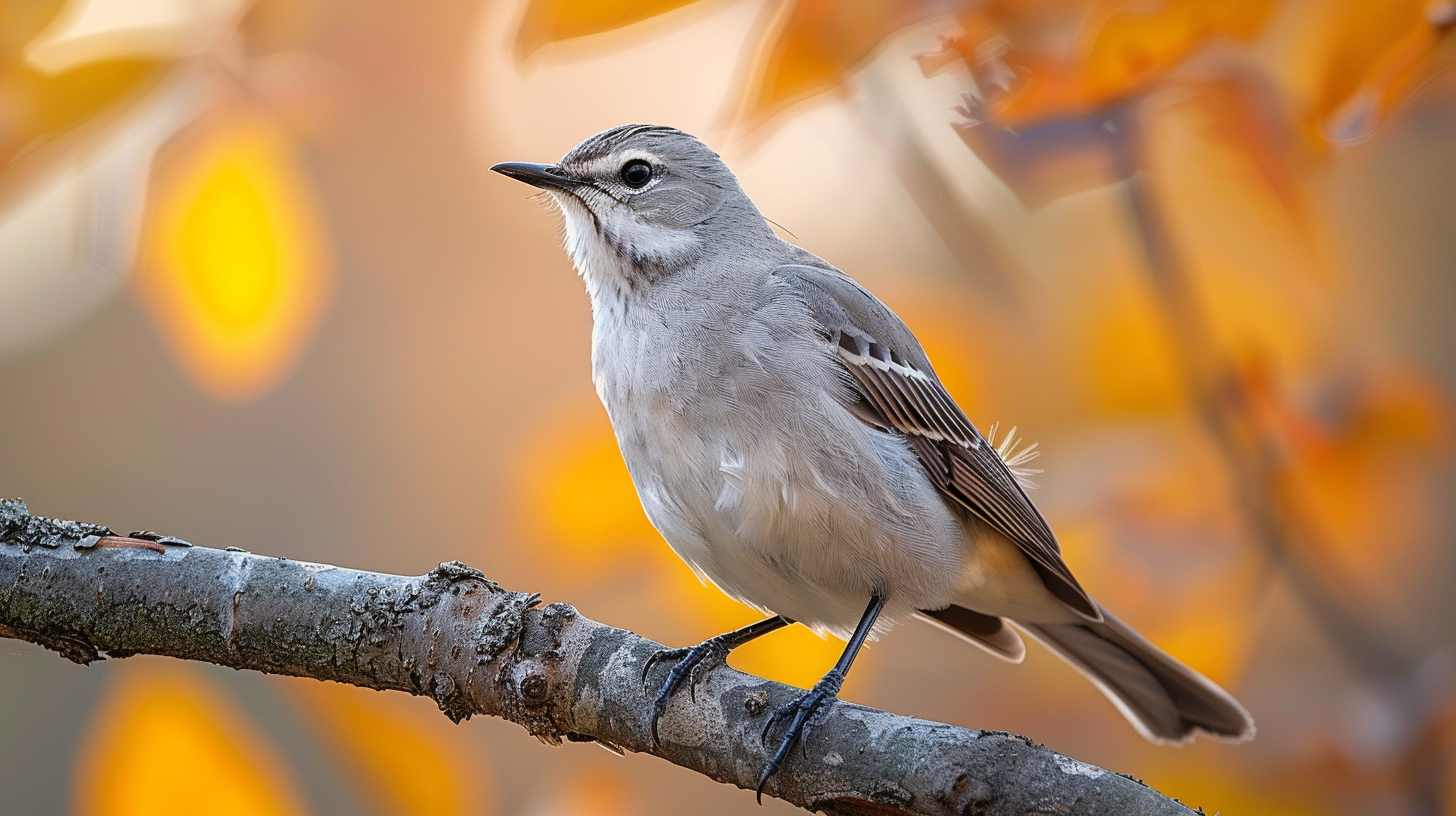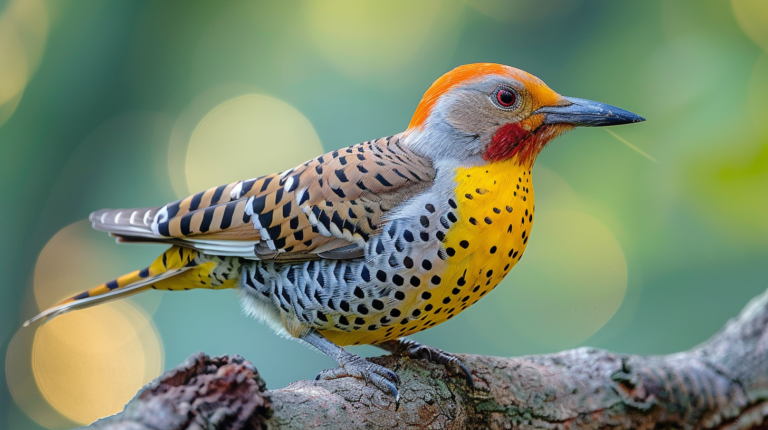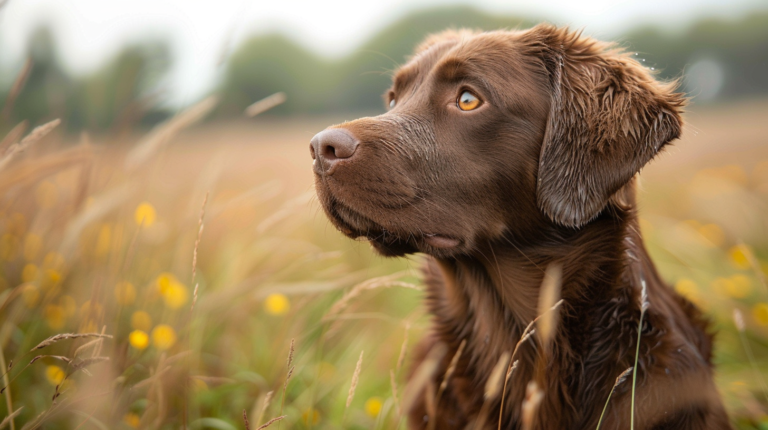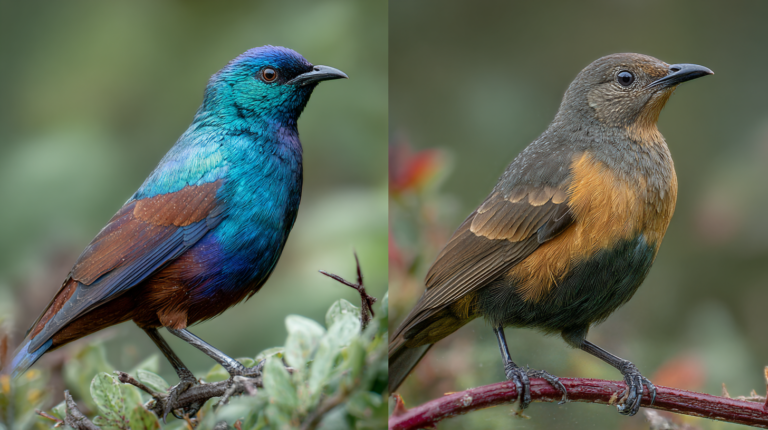Discover 5 fascinating Arkansas State Bird facts that transform pet bird care. Learn from Northern Mockingbird behavior to improve your pet bird’s health, training, and happiness. Expert tips inside!
Did you know that the Arkansas State Bird has inspired countless pet bird enthusiasts to better understand avian behavior and care? The Northern Mockingbird, Arkansas’s official state bird since 1929, offers fascinating insights that can transform how we care for our feathered companions at home. Whether you’re a seasoned bird owner or considering adopting your first pet bird, understanding the remarkable characteristics of the Arkansas State Bird provides valuable lessons in avian intelligence, communication, and environmental needs.
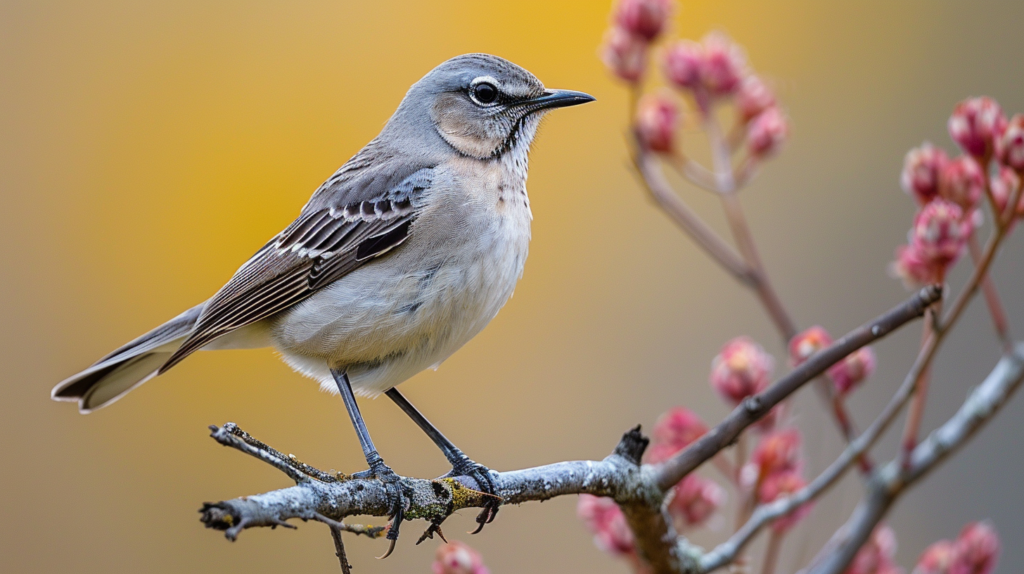
The Arkansas State Bird, scientifically known as Mimus polyglottos, demonstrates extraordinary vocal abilities, territorial behaviors, and adaptability that mirror many traits we see in domestic birds. By exploring the fascinating world of Arkansas’s state bird, pet owners can gain deeper insights into their own birds’ natural instincts, behavioral patterns, and care requirements. This knowledge becomes particularly valuable when creating enriching environments that honor our pet birds’ wild heritage while ensuring their health and happiness in captivity.
Living in rural Arkansas for several years, I’ve had countless opportunities to observe Northern Mockingbirds in their natural habitat. Their complex songs and fearless defense of territory taught me invaluable lessons about providing my own pet canaries with adequate space, mental stimulation, and respect for their natural behaviors.
The Arkansas State Bird: A Complete Introduction
The Northern Mockingbird earned its designation as the Arkansas State Bird through a combination of its year-round residence, distinctive characteristics, and cultural significance throughout the Natural State. These medium-sized songbirds, measuring 8-10 inches in length with impressive 12-14 inch wingspans, represent the perfect balance of beauty, intelligence, and resilience that Arkansas residents cherish.
Understanding the Arkansas State Bird provides pet bird owners with crucial insights into avian behavior, environmental needs, and social structures. Northern Mockingbirds exhibit complex territorial behaviors, sophisticated communication systems, and remarkable adaptability—traits that domestic birds retain despite generations of captive breeding. This knowledge directly translates to better pet care practices, from cage placement and socialization to nutrition and mental stimulation.
The Arkansas State Bird’s habitat preferences reveal important lessons about environmental enrichment for pet birds. Northern Mockingbirds thrive in areas with dense shrubs, open spaces for foraging, and elevated perches for surveillance—elements that should be replicated in domestic bird environments. Their preference for varied landscapes mirrors the need for diverse experiences in pet bird care, including different perch textures, hiding spots, and feeding locations.
Pet bird owners can learn from the Arkansas State Bird’s remarkable resilience during seasonal changes. These birds adapt their behavior, diet, and social interactions based on environmental conditions, demonstrating the importance of providing varied experiences and challenges for captive birds throughout the year.
Remarkable Vocal Abilities: What Pet Owners Can Learn
The Arkansas State Bird possesses one of the most sophisticated vocal repertoires in the avian world, with the ability to mimic over 200 different songs from other bird species, insects, and even mechanical sounds. This extraordinary mimicry ability offers valuable insights for pet bird owners, particularly those with talking species like parrots, cockatiels, and budgerigars.
Northern Mockingbirds develop their extensive vocabularies through careful listening, practice, and social interaction—the same principles that guide successful pet bird training. The Arkansas State Bird typically learns new sounds during its first year of life, with young males being particularly receptive to vocal learning. This pattern mirrors optimal training windows for pet birds, highlighting the importance of early socialization and consistent vocal interaction.
For more expert pet care tips and product recommendations, visit BlithePet.com — your trusted source for pet wellness.
The territorial songs of the Arkansas State Bird serve multiple functions: attracting mates, defending territory, and establishing social hierarchies. Pet bird owners can apply these principles by understanding that their birds’ vocalizations often serve similar purposes. Excessive screaming might indicate territorial stress, while varied singing suggests contentment and mental stimulation.
Research shows that Northern Mockingbirds sing most actively during dawn and dusk, patterns that pet bird owners should consider when planning daily routines. Providing consistent wake-up and bedtime schedules that align with natural circadian rhythms can significantly improve pet bird health and reduce behavioral problems.
The Arkansas State Bird’s ability to incorporate environmental sounds into its repertoire demonstrates the importance of acoustic enrichment for pet birds. Playing varied sounds, music, and natural recordings can stimulate vocal development and provide mental stimulation that honors birds’ natural learning abilities.
Physical Characteristics and What They Mean for Pet Bird Care
The Arkansas State Bird exhibits distinctive physical features that provide valuable lessons for pet bird owners regarding health monitoring, environmental needs, and species-appropriate care. Northern Mockingbirds display subtle gray plumage with darker wings marked by prominent white patches visible during flight, characteristics that help owners better understand avian anatomy and natural behaviors.
Understanding the Arkansas State Bird’s physical adaptations helps pet owners recognize healthy versus concerning changes in their own birds. Northern Mockingbirds maintain sleek, well-groomed feathers year-round, demonstrating the importance of regular preening and environmental conditions that support proper feather care. Pet bird owners should provide adequate humidity, appropriate lighting, and stress-free environments that encourage natural grooming behaviors.
The Arkansas State Bird’s wing structure, designed for both short bursts of speed and sustained flight, highlights the critical importance of exercise for captive birds. Northern Mockingbirds require significant daily activity, a need that pet bird owners must address through adequate flight space, structured exercise periods, and environmental enrichment that encourages natural movement patterns.
Body language observation skills developed by watching the Arkansas State Bird translate directly to better pet bird care. Northern Mockingbirds communicate through specific postures, wing positions, and tail movements that indicate mood, health status, and environmental comfort levels. Learning to read these subtle signals helps pet owners respond appropriately to their birds’ needs and identify potential health concerns early.
The Arkansas State Bird’s beak structure, designed for diverse feeding activities including fruit consumption, insect hunting, and seed cracking, demonstrates the importance of varied textures and challenges in pet bird diets. Providing different food consistencies, foraging opportunities, and appropriate chewing materials supports natural behaviors and dental health.
Behavioral Patterns That Inform Pet Bird Training
The Arkansas State Bird demonstrates complex behavioral patterns that offer invaluable insights for pet bird training, socialization, and environmental management. Northern Mockingbirds exhibit territorial behaviors, social hierarchies, and seasonal activity changes that directly correlate with successful pet bird care strategies.
Territorial defense behaviors observed in the Arkansas State Bird provide crucial understanding for managing pet bird aggression and space-related stress. Northern Mockingbirds establish and vigorously defend territories ranging from 1-2 acres, behavior that translates to pet birds’ need for clearly defined spaces, consistent routines, and respect for their chosen areas within homes.
The Arkansas State Bird’s foraging behaviors reveal important lessons about mental stimulation and natural feeding patterns. Northern Mockingbirds spend significant portions of their day searching for food, investigating new objects, and exploring their environment. Pet bird owners can replicate these behaviors through puzzle feeders, hidden treats, and regularly rotating toys that encourage natural investigation and problem-solving.
Social interaction patterns displayed by the Arkansas State Bird demonstrate the importance of appropriate socialization for pet birds. Northern Mockingbirds maintain complex relationships with their environment, other birds, and seasonal changes. Understanding these patterns helps pet owners provide adequate social stimulation while respecting their birds’ needs for quiet time and personal space.
Seasonal behavioral changes in the Arkansas State Bird highlight the importance of environmental variation for pet birds. Northern Mockingbirds adjust their activity levels, dietary preferences, and social interactions throughout the year, patterns that captive birds benefit from experiencing through varied routines, seasonal dietary changes, and adjusted environmental conditions.
Table 1 – Markdown Version:
| Arkansas State Bird Behavior | Pet Bird Application | Training Benefit |
|---|---|---|
| Morning vocal practice | Consistent training sessions at dawn | Enhanced learning retention |
| Territorial perch selection | Provide multiple perch options | Reduces aggression, improves comfort |
| Foraging ground behavior | Hide food in various locations | Mental stimulation, natural behaviors |
| Mate bonding displays | Consistent positive reinforcement | Strengthens human-bird bond |
| Seasonal activity changes | Adjust routine based on daylight | Maintains natural circadian rhythms |
| Defense posturing | Recognize stress signals early | Prevents behavioral problems |
Diet and Feeding Insights for Pet Bird Nutrition
The Arkansas State Bird’s diverse dietary habits provide essential guidance for pet bird nutrition, demonstrating the importance of varied food sources, seasonal dietary changes, and natural foraging behaviors. Northern Mockingbirds consume approximately 50% insects and 50% fruits and berries, a balance that offers valuable insights for pet bird feeding strategies.
Understanding the Arkansas State Bird’s feeding patterns reveals crucial timing considerations for pet bird meals. Northern Mockingbirds are most active feeders during early morning and late afternoon hours, patterns that pet bird owners should incorporate into daily feeding schedules to align with natural circadian rhythms and optimize digestion.
The seasonal dietary shifts observed in the Arkansas State Bird highlight the importance of variety in pet bird nutrition. During spring and summer, Northern Mockingbirds increase insect consumption to meet protein needs for breeding and molting, while fall and winter bring increased fruit consumption for energy storage. Pet bird owners can replicate these patterns by adjusting protein levels seasonally and providing varied food textures throughout the year.
Foraging techniques displayed by the Arkansas State Bird demonstrate the importance of food presentation for pet birds. Northern Mockingbirds spend considerable time searching through leaf litter, investigating bark crevices, and exploring various surfaces for food. This behavior emphasizes the need for puzzle feeders, hidden treats, and varied feeding locations that encourage natural foraging instincts.
The Arkansas State Bird’s preference for elevated feeding locations provides insights into optimal food placement for pet birds. Northern Mockingbirds often consume fruits and berries from shrubs and trees rather than ground level, suggesting that pet birds benefit from multiple feeding stations at different heights within their living spaces.
Hydration patterns observed in the Arkansas State Bird reveal important water management considerations for pet bird care. Northern Mockingbirds require consistent access to fresh water for drinking and bathing, behaviors that support feather health, temperature regulation, and overall well-being. Pet bird owners should provide multiple water sources and ensure regular cleaning to maintain optimal hygiene.
Environmental Enrichment Lessons from Wild Arkansas Birds
The Arkansas State Bird’s habitat requirements offer comprehensive insights for creating enriching environments that support pet bird health, natural behaviors, and psychological well-being. Northern Mockingbirds thrive in environments that provide diverse perching options, shelter opportunities, and varied terrain that encourages exploration and natural movement patterns.
Observing the Arkansas State Bird’s preference for mixed habitat environments reveals the importance of environmental complexity for pet birds. Northern Mockingbirds flourish in areas that combine open spaces for movement with dense vegetation for shelter, a principle that pet bird owners can apply by creating varied zones within aviaries or flight areas that serve different behavioral needs.
The territorial boundaries maintained by the Arkansas State Bird provide valuable guidance for space management in pet bird care. Northern Mockingbirds establish clear territorial limits and defend specific areas vigorously, behavior that translates to pet birds’ need for clearly defined spaces, consistent territorial boundaries, and respect for their chosen areas within domestic environments.
Nesting site selection patterns displayed by the Arkansas State Bird offer insights into security and comfort requirements for pet birds. Northern Mockingbirds choose nesting locations that provide protection from predators, weather shelter, and easy access to food sources. Pet bird owners can apply these principles by ensuring that sleeping areas, nesting boxes, and retreat spaces offer similar security and accessibility.
The Arkansas State Bird’s use of elevated observation posts demonstrates the importance of vantage points for pet bird mental health. Northern Mockingbirds spend significant time on high perches scanning their environment for threats and opportunities, behavior that pet birds require for psychological security and environmental awareness.
Environmental interaction patterns observed in the Arkansas State Bird highlight the need for manipulable objects and varied textures in pet bird environments. Northern Mockingbirds regularly interact with branches, leaves, bark, and other natural materials, activities that pet bird owners can replicate through appropriate toys, natural perches, and safe materials for investigation and manipulation.
Table 2 – Markdown Version:
| Environmental Element | Arkansas State Bird Usage | Pet Bird Application |
|---|---|---|
| Dense shrubs (3-8 feet) | Nesting and shelter | Provide hiding spots, covered areas |
| Open ground areas | Foraging and hunting | Create floor space for ground feeding |
| Elevated perches (8-15 feet) | Territory surveillance | Multiple perch heights for observation |
| Water sources | Drinking and bathing | Fresh water dishes and shallow baths |
| Varied vegetation | Seasonal food sources | Rotate safe plants and branches |
| Quiet retreat areas | Rest and preening | Designated quiet zones away from activity |
Health and Wellness Indicators from Arkansas State Birds
The Arkansas State Bird demonstrates specific health and wellness indicators that provide valuable guidance for pet bird owners in monitoring their companions’ physical and mental well-being. Northern Mockingbirds exhibit clear behavioral and physical signs of optimal health that translate directly to domestic bird care assessment techniques.
Observing the Arkansas State Bird’s daily activity patterns reveals important wellness indicators for pet bird health monitoring. Healthy Northern Mockingbirds display consistent morning and evening activity periods, regular preening behaviors, and sustained vocal interactions throughout the day. Pet bird owners can use these patterns as baseline indicators for their own birds’ health and identify potential concerns when normal patterns change.
The Arkansas State Bird’s seasonal behavioral adaptations provide insights into normal stress responses versus concerning health changes in pet birds. Northern Mockingbirds adjust their activity levels, social interactions, and feeding patterns naturally throughout the year, demonstrating that some behavioral changes reflect normal adaptation rather than health problems.
Feather condition and maintenance behaviors displayed by the Arkansas State Bird offer crucial guidance for pet bird health assessment. Healthy Northern Mockingbirds maintain sleek, well-groomed plumage through regular preening, balanced nutrition, and appropriate environmental conditions. Pet bird owners should monitor preening frequency, feather quality, and molting patterns as key health indicators.
The Arkansas State Bird’s response to environmental stressors provides valuable insights into stress management for pet birds. Northern Mockingbirds demonstrate resilience through appropriate behavioral adaptations while showing clear stress signals when environmental conditions exceed their tolerance levels. Understanding these responses helps pet bird owners create supportive environments and recognize when veterinary intervention may be necessary.
Social interaction patterns observed in the Arkansas State Bird reveal important indicators of psychological health for pet birds. Northern Mockingbirds maintain complex social relationships with their environment and other birds, behaviors that pet birds require through appropriate interaction with owners, environmental enrichment, and mental stimulation activities.
Common Mistakes Pet Owners Make When Ignoring Wild Bird Wisdom
Pet bird owners often make critical mistakes by failing to incorporate lessons learned from wild birds like the Arkansas State Bird, resulting in behavioral problems, health issues, and reduced quality of life for their feathered companions. Understanding these common errors helps create more natural and supportive environments for domestic birds.
One of the most significant mistakes involves ignoring the Arkansas State Bird’s territorial needs when designing pet bird living spaces. Northern Mockingbirds require clearly defined territories with established boundaries, yet many pet bird owners place cages in high-traffic areas or frequently move birds between locations, creating constant territorial stress and behavioral problems.
Feeding schedule errors represent another common mistake that conflicts with Arkansas State Bird natural patterns. Northern Mockingbirds follow specific feeding rhythms aligned with natural light cycles, but many pet bird owners provide food randomly throughout the day or leave food available constantly, disrupting natural eating patterns and potentially causing digestive issues.
Social interaction misunderstandings create significant problems when pet bird owners fail to recognize the Arkansas State Bird’s complex communication needs. Northern Mockingbirds engage in sophisticated vocal exchanges and territorial interactions, yet pet birds often receive inadequate social stimulation or inappropriate responses to their communication attempts, leading to behavioral problems and psychological stress.
Environmental complexity oversights occur when pet bird owners provide static environments that ignore the Arkansas State Bird’s need for varied experiences and challenges. Northern Mockingbirds thrive in dynamic environments with changing elements, seasonal variations, and diverse challenges, while many pet birds live in unchanging environments that fail to provide adequate mental stimulation.
Exercise and movement restrictions represent serious mistakes that contradict the Arkansas State Bird’s natural activity patterns. Northern Mockingbirds require significant daily flight exercise and varied movement opportunities, yet many pet birds live in cages too small for proper exercise or receive inadequate out-of-cage time for natural movement patterns.
Expert Tips for Applying Arkansas State Bird Lessons to Pet Care
Professional pet bird care benefits tremendously from applying lessons learned through Arkansas State Bird observation and behavior analysis. These expert tips translate wild bird wisdom into practical pet care strategies that improve health outcomes, behavioral satisfaction, and overall quality of life for domestic birds.
Tip 1: Implement Natural Light Cycles Based on Arkansas State Bird Patterns Northern Mockingbirds follow strict circadian rhythms that pet bird owners should replicate through consistent lighting schedules. Provide 10-12 hours of bright light followed by complete darkness, adjusting seasonally to maintain natural hormone cycles and prevent behavioral problems.
Tip 2: Create Territorial Zones Inspired by Arkansas State Bird Behavior Establish clearly defined areas within your bird’s living space that serve specific functions: feeding zones, sleeping areas, play spaces, and quiet retreat locations. This territorial structure reduces stress and provides psychological security similar to wild mockingbird territories.
Tip 3: Develop Vocal Interaction Routines Based on Arkansas State Bird Communication Schedule specific times for vocal interaction that align with natural mockingbird activity periods. Early morning and evening sessions promote healthy communication development while respecting your bird’s natural vocal rhythm patterns.
Tip 4: Provide Seasonal Environmental Changes Following Arkansas State Bird Adaptations Rotate toys, perches, and environmental elements seasonally to replicate the changing conditions that Arkansas State Birds experience naturally. This variation prevents boredom and encourages natural adaptation behaviors.
Tip 5: Design Foraging Opportunities Inspired by Arkansas State Bird Feeding Behaviors Hide food in various locations, use puzzle feeders, and create foraging challenges that mirror the complex feeding behaviors displayed by Northern Mockingbirds in their natural environment.
Tip 6: Establish Exercise Routines Based on Arkansas State Bird Activity Patterns Provide structured exercise periods that include both intensive flight time and gentle movement activities, following the natural activity cycles observed in wild mockingbirds.
Tip 7: Monitor Health Using Arkansas State Bird Wellness Indicators Observe daily activity patterns, vocal behaviors, feeding routines, and social interactions as key health indicators, using changes from normal patterns as early warning signs for potential health concerns.
Tip 8: Create Emergency Response Plans Based on Arkansas State Bird Stress Signals Learn to recognize stress signals similar to those displayed by mockingbirds under threat, and develop immediate response strategies that provide security and comfort during challenging situations.
Table 3 – Markdown Version:
| Health Indicator | Arkansas State Bird Signs | Pet Bird Warning Signs | Action Required |
|---|---|---|---|
| Vocal Activity | Consistent morning/evening songs | Sudden silence or excessive screaming | Veterinary examination within 24 hours |
| Feeding Behavior | Regular foraging patterns | Refusing favorite foods or overeating | Monitor closely, vet visit if persists |
| Preening Habits | Daily feather maintenance | No preening or excessive feather damage | Immediate veterinary attention |
| Activity Level | Consistent daily routines | Lethargy or hyperactivity | Health check within 48 hours |
| Social Interaction | Normal territorial responses | Aggression or withdrawal | Behavioral assessment needed |
| Sleep Patterns | Regular nighttime rest | Disrupted sleep or daytime drowsiness | Environment and routine evaluation |
When to Consult a Veterinarian: Learning from Arkansas State Bird Stress Signals
Understanding when to seek professional veterinary care for pet birds requires recognizing subtle signs that mirror stress and illness indicators displayed by the Arkansas State Bird in challenging conditions. Northern Mockingbirds demonstrate specific behavioral changes when facing health challenges or environmental stressors that directly correlate with warning signs pet bird owners should monitor carefully.
The Arkansas State Bird’s response to illness provides clear guidance for recognizing emergency situations in pet birds. Northern Mockingbirds typically maintain active, vocal behaviors even during mild illness, making sudden behavioral changes particularly significant. Pet bird owners should seek immediate veterinary attention when birds show sudden decreases in vocal activity, changes in normal movement patterns, or alterations in feeding behaviors that last more than 24 hours.
Respiratory distress signals observed in Arkansas State Birds under environmental stress translate directly to emergency warning signs for pet birds. Northern Mockingbirds experiencing breathing difficulties display specific posturing, tail movements, and vocal changes that pet bird owners can learn to recognize. Any signs of labored breathing, open-mouth breathing, or unusual positioning require immediate veterinary intervention.
The Arkansas State Bird’s behavioral responses to territorial threats provide insights into stress-related health concerns for pet birds. Northern Mockingbirds show specific stress behaviors including reduced feeding, altered sleep patterns, and changes in social interactions when facing ongoing territorial challenges. Pet birds displaying similar patterns may require veterinary assessment to rule out underlying health issues contributing to stress responses.
Seasonal health challenges experienced by the Arkansas State Bird offer guidance for proactive veterinary care scheduling for pet birds. Northern Mockingbirds face increased health risks during molting periods, breeding seasons, and extreme weather conditions. Pet bird owners should schedule preventive veterinary visits during these vulnerable times and monitor birds more closely for health changes.
Myth-Busting: Common Misconceptions About Arkansas State Birds and Pet Care
Several persistent myths about the Arkansas State Bird and general avian behavior create problematic misconceptions that negatively impact pet bird care. Addressing these myths with factual information helps pet bird owners make better decisions based on scientific understanding rather than popular misconceptions.
Myth 1: Arkansas State Birds are aggressive and territorial, so pet birds should be kept isolated The reality is that Northern Mockingbirds display territorial behaviors as natural, healthy responses to environmental challenges, not inherent aggression. Pet birds require appropriate social stimulation and territorial boundaries to maintain psychological health. Complete isolation often creates more behavioral problems than structured socialization within defined territories.
Myth 2: Wild birds like the Arkansas State Bird don’t need much water, so pet birds can survive with minimal hydration Northern Mockingbirds actually require significant daily water intake for drinking, bathing, and feather maintenance. This myth leads to serious dehydration problems in pet birds. Fresh water should be available constantly, with additional bathing opportunities provided regularly to support optimal health.
Myth 3: Arkansas State Birds adapt easily to any environment, so pet birds don’t need specialized housing While Northern Mockingbirds show remarkable adaptability, they thrive in specific habitat conditions that support their natural behaviors. Pet birds require carefully designed environments that provide appropriate space, perching options, lighting, and environmental complexity to maintain physical and psychological health.
The scientific evidence clearly demonstrates that understanding Arkansas State Bird natural behaviors leads to significantly improved pet bird care outcomes. Research conducted by avian veterinarians and animal behaviorists consistently shows that pet birds living in environments designed around natural behaviors display fewer health problems, reduced stress levels, and improved longevity compared to birds in traditional care setups.
Conclusion: Transforming Pet Bird Care Through Arkansas State Bird Wisdom
The remarkable Arkansas State Bird offers pet bird owners a comprehensive blueprint for providing exceptional care that honors their feathered companions’ natural heritage while ensuring optimal health and happiness in domestic environments. By understanding the complex behaviors, environmental needs, and health indicators displayed by Northern Mockingbirds, pet owners can create more enriching, supportive, and biologically appropriate care strategies.
The lessons learned from Arkansas State Bird observation extend far beyond basic care requirements, providing insights into communication, environmental enrichment, health monitoring, and behavioral management that transform the pet ownership experience. These wild bird wisdom applications result in healthier, happier pet birds that express natural behaviors while forming stronger bonds with their human companions.
Implementing Arkansas State Bird-inspired care strategies requires commitment to ongoing observation, environmental adaptation, and responsive caregiving that evolves with your bird’s changing needs throughout different life stages and seasons. The investment in this comprehensive approach pays dividends through improved pet bird health, reduced behavioral problems, and enhanced quality of life for both birds and their owners.
Have you noticed specific behaviors in your pet bird that mirror the territorial or vocal patterns we’ve discussed about the Arkansas State Bird? Share your observations and experiences in the comments below! For more expert pet care tips, comprehensive guides, and evidence-based advice that transforms pet ownership, visit BlithePet.com — your trusted source for exceptional pet wellness and care strategies.

